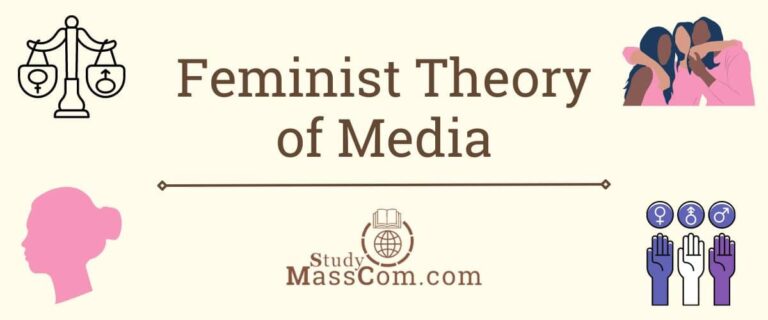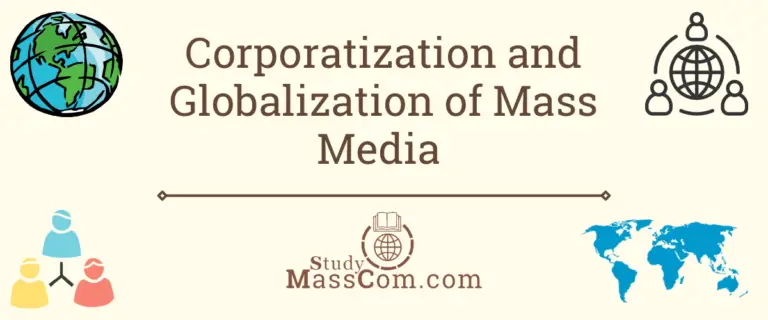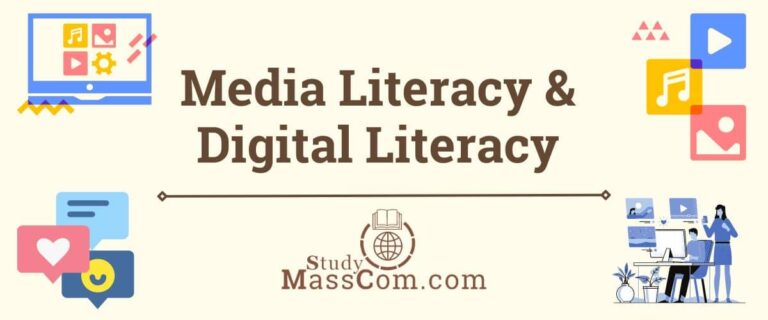Traditional Media vs. New Media
Introduction
In today’s rapidly evolving digital age, the way information is communicated, consumed, and shared has undergone significant transformation. This transformation is largely attributed to the emergence of two distinct categories of media: traditional media and new media. Traditional media encompasses the conventional means of mass communication that have been established over the years, such as print newspapers, television, radio, and physical books. On the other hand, new media refers to modern forms of communication and technology, including internet, social media, mobile devices, virtual reality, and other digital platforms.

What is Traditional Media?
Traditional media refers to the conventional means of mass communication that existed before the rise of digital technologies and the internet. It includes various forms of media that have been established over the years, such as:
1. Print Media: This includes newspapers, magazines, and newsletters, which deliver news, articles, and other information in printed formats.
2. Broadcast Media: This category comprises television and radio, which transmit news, entertainment, and other programs through electromagnetic waves.
3. Outdoor Media: This encompasses billboards, posters, and signage displayed in public spaces to convey advertising messages.
4. Direct Mail: This involves sending printed materials, such as brochures and catalogs, directly to individuals’ mailboxes.
5. Film: Traditional film refers to motion pictures that are shown in theaters and projected onto a screen.
6. Analog Audio: This includes cassette tapes, vinyl records, and other analog formats for recording and playing audio content.
7. Books: Traditional printed books have been the primary means of long-form information storage and dissemination for centuries.
While traditional media remains relevant in some contexts, its influence has been significantly impacted by the rise of new media and digital technologies. The accessibility, interactivity, and global reach of new media have changed the way people consume and interact with information, leading to a transformation in the media landscape.
Features of Traditional Media
Here are some key features of traditional media:
One-way Communication
Traditional media primarily involves one-way communication, where information is delivered from the source (e.g., newspaper, TV station) to the audience without direct interaction or feedback.
Limited Interactivity
Unlike new media, traditional media lacks the level of interactivity seen in digital platforms. Audiences typically have limited or no ability to actively engage with the content or participate in discussions.
Physical Format
Traditional media often exists in physical formats, such as printed newspapers and magazines, physical books, and analog audio or video recordings.
Scheduled Distribution
Broadcast media, like television and radio, operate on a scheduled distribution model, where content is broadcast at specific times, and audiences need to tune in accordingly.
Localized Reach
Traditional media, especially newspapers and regional television channels, often have a more localized reach compared to the global nature of new media platforms.
Production Costs
Producing traditional media content, especially for broadcast and print, can involve higher production costs and longer lead times compared to digital content.
Professional Gatekeepers
Traditional media typically involves professional journalists, editors, and producers who act as gatekeepers, deciding which content gets published or broadcast.
Longevity and Permanence
Printed materials, such as books and newspapers, have a sense of longevity and permanence, allowing people to access them even without digital devices.
Limited Analytics
Traditional media lacks the advanced analytics and tracking capabilities of new media, making it challenging to gather detailed audience insights.
Offline Consumption
Unlike new media, which often requires internet access, traditional media can be consumed offline, allowing people to read newspapers, watch TV, or listen to pre-recorded content without an internet connection.
While traditional media still holds significance in certain contexts, its role has evolved in response to the growth of new media. The distinction between traditional and new media continues to blur as digital technologies become more integrated into the media landscape.
What is New Media?
New media refers to the modern forms of communication and technology that have emerged in the digital age. It includes various interactive and digital platforms such as the internet, social media, mobile devices, virtual reality, augmented reality, and other digital technologies. These platforms enable users to create, share, and interact with content in real time, fostering a more participatory and interconnected digital environment. New media has significantly impacted how information is disseminated, consumed, and experienced, transforming various aspects of society, culture, and communication.
Features of New Media
Here are some key features of new media:
Interactivity
New media encourages active participation and engagement from users. Unlike traditional media, which is often one-way communication, new media allows users to interact with content, create their own, and engage in discussions with others.
Accessibility
Digital technologies have made new media widely accessible to people around the world. The internet and mobile devices have facilitated the ease of accessing and consuming information and entertainment.
Global Reach
New media has a global reach, enabling content to be shared and accessed by people from different parts of the world. This interconnectedness has led to a more diverse and inclusive online community.
Multimedia Integration
New media combines various forms of media, such as text, images, audio, and video, to create richer and more immersive experiences for users.
Real-time Communication
Platforms like social media and instant messaging enable real-time communication, allowing people to connect and exchange information instantaneously.
User-generated Content
Users can actively contribute to new media by creating and sharing their own content, leading to a democratization of information and creativity.
Personalization
New media platforms often use algorithms to tailor content and recommendations based on user’s interests and behavior, providing a more personalized experience.
Virality and Shareability
Content on new media platforms can quickly go viral and be shared widely, amplifying its reach and impact.
Constant Evolution
New media is continuously evolving, with emerging technologies and trends shaping the way content is produced, shared, and consumed.
Integration of Virtual and Real Worlds
Augmented reality and virtual reality technologies have blurred the lines between the physical and digital worlds, creating new possibilities for immersive experiences.
Overall, new media has revolutionized how we communicate, access information, and interact with each other, bringing about significant changes in various aspects of modern life.
Differences Between New Media and Traditional Media
The main differences between new media and traditional media lie in their technological characteristics, communication methods, interactivity, accessibility, and audience engagement. Here’s a summary of the key distinctions:
Technology
Traditional Media: Relies on analog technologies and physical formats, such as print newspapers, television broadcasting, radio waves, and physical books.
New Media: Utilizes digital technologies and platforms, including the internet, social media, mobile devices, virtual reality, and digital publishing.
Communication Methods
Traditional Media: Primarily operates on a one-way communication model, where information is disseminated from the source to the audience without immediate feedback or interaction.
New Media: Emphasizes two-way communication, allowing for active engagement and interaction between content creators and audiences. Users can comment, share, create content, and participate in discussions.
Interactivity
Traditional Media: Generally lacks interactivity, providing passive consumption of content with limited opportunities for user participation or customization.
New Media: Promotes interactivity, encouraging users to engage with content, create their own, and actively participate in shaping the conversation.
Accessibility
Traditional Media: Often requires physical distribution, limiting its reach and accessibility to specific geographic locations or audiences.
New Media: Enables global reach and instant accessibility through the internet and digital platforms, allowing users worldwide to access content at any time.
Audience Engagement
Traditional Media: Offers limited audience engagement, as it relies on predefined content schedules and lacks real-time feedback mechanisms.
New Media: Facilitates real-time audience engagement and feedback, encouraging dynamic interactions and immediate responses.
Production Costs and Distribution
Traditional Media: Tends to involve higher production costs and distribution expenses due to physical printing, broadcasting, and shipping requirements.
New Media: Generally offers lower production costs and instant distribution possibilities through digital platforms, reducing physical distribution expenses.
In the context of development communication, modern communication methods are considered magic multipliers.
Content Longevity
Traditional Media: Often has a sense of longevity and permanence, as printed materials and pre-recorded broadcasts can be kept for extended periods.
New Media: Often characterized by a dynamic and ever-changing landscape, with content frequently updated, shared, and replaced in real-time.
While both traditional and new media continue to coexist, the rise of new media has profoundly transformed the media landscape, influencing how information is disseminated, consumed, and interacted with in the digital age.
Examples of Traditional and New Media
Here are some examples of both traditional media and new media:
Traditional Media Examples
1. Print Newspapers: Physical newspapers that provide news, articles, and other information in print format, distributed daily or weekly.
2. Television (TV): Broadcast networks that transmit news, entertainment shows, documentaries, and commercials via electromagnetic waves to television sets.
3. Radio: Broadcast stations that air music, talk shows, news, and other audio content over radio frequencies. Learn more about different formats of radio programs.
4. Magazines: Printed publications that cover various topics, including fashion, lifestyle, science, and more, released on a regular basis.
5. Books: Printed materials that contain literary works, fiction, non-fiction, and educational content, available in physical bookstores and libraries.
New Media Examples
1. Social Media: Platforms like Facebook, Twitter, Instagram, and LinkedIn allow users to share updates and media, and connect with others.
2. Websites: Online platforms offering various types of content, information, and services, accessible through web browsers.
3. Online News Portals: Websites dedicated to providing news updates and articles, accessible to users around the world.
4. Streaming Services: Platforms like Netflix, Hulu, and Disney+ that offer on-demand video content through internet streaming.
5. Podcasts: Digital audio programs available for download or streaming, covering a wide range of topics and interests.
6. Mobile Apps: Applications designed for smartphones and tablets, offering various services, games, and content.
7. Blogs: Personal or professional websites that publish articles, opinions, and information, often allowing readers to comment and engage with the author.
These examples showcase the diverse range of media formats available in both traditional and new media, each catering to different audience preferences and consumption habits. It’s essential to recognize that the media landscape is continually evolving, with new forms of media emerging and traditional media adapting to incorporate digital technologies and online platforms.
Conclusion
In today’s rapidly evolving digital age, the way information is communicated, consumed, and shared has undergone significant transformation. This transformation is largely attributed to the emergence of two distinct categories of media: traditional media and new media. Traditional media encompasses the conventional means of mass communication that have been established over the years, such as print newspapers, television, radio, and physical books. On the other hand, new media refers to modern forms of communication and technology, including the internet, social media, mobile devices, virtual reality, and other digital platforms.
FAQs
New media encompasses a range of digital communication and interactive content that emerged with the internet’s rise. Some types include websites, social media platforms (e.g., Facebook, Twitter), blogs, podcasts, online videos (e.g., YouTube), virtual reality (VR), mobile apps, online gaming, e-books, webcomics, webinars, digital art, virtual assistants, web-based advertising, and streaming services (e.g., Netflix). As technology advances, new forms of media may continue to evolve, shaping how we consume and interact with information and entertainment.
The main difference between new media and old media lies in their technology and communication methods. Old media refers to traditional forms of mass communication like newspapers, radio, and television, which primarily rely on one-way broadcasting to a passive audience. New media, on the other hand, encompasses digital platforms and interactive technologies such as websites, social media, blogs, and online videos, enabling two-way communication and active user engagement. New media allows for real-time interaction, user-generated content, and personalized experiences, while old media typically provides limited interactivity and less personalized content delivery.
Traditional and new media can work together synergistically to create a powerful and cohesive communication approach. By integrating both types of media, organizations can amplify their messaging and reach a broader audience. Here’s how they can collaborate:
Cross-Promotion: Traditional media can promote their digital channels, such as websites and social media accounts, to drive online engagement, while new media can encourage their audience to access traditional media content.
Multi-Platform Content: Repurposing content for various media formats ensures consistent messaging across channels, catering to different audience preferences.
Audience Engagement: New media platforms allow direct interaction with the audience, and traditional media can use this to encourage feedback and participation.
Data Collection: New media provides valuable data on audience behavior and preferences, which can inform traditional media content strategies.
Amplifying Events: Traditional media can cover events, and new media can live-stream or provide real-time updates, enhancing the overall experience for audiences.
Influencer Marketing: Traditional media outlets can collaborate with social media influencers to extend their reach and credibility to the digital audience.
Cross-Channel Advertising: Advertising across both traditional and new media channels allows for broader exposure and targeted messaging.
Enriched Storytelling: Traditional media can provide in-depth stories, while new media can supplement them with multimedia elements, interactive features, and ongoing updates.
By leveraging the strengths of traditional and new media, organizations can build a more comprehensive and impactful communication strategy that meets the evolving needs of their audience.
Traditional media and new media convergence refers to the merging and integration of traditional forms of mass communication (e.g., television, radio, newspapers) with digital and interactive technologies (e.g., internet, social media, mobile apps). This convergence blurs the lines between different media platforms, allowing content to be accessed, shared, and interacted with seamlessly across various devices. It facilitates cross-platform storytelling, multi-channel content distribution, and audience engagement, transforming how information and entertainment are produced, consumed, and experienced in the digital age.



